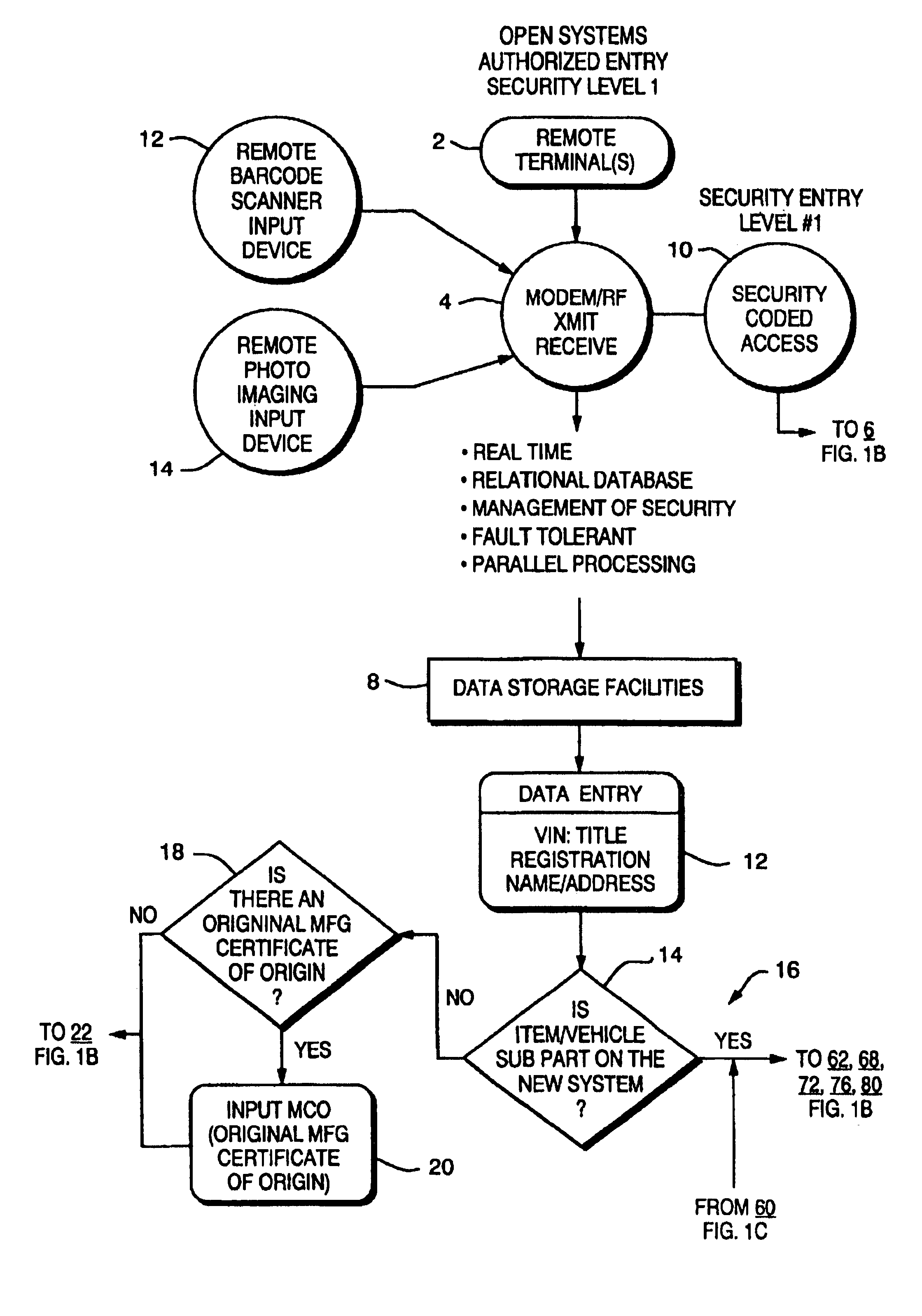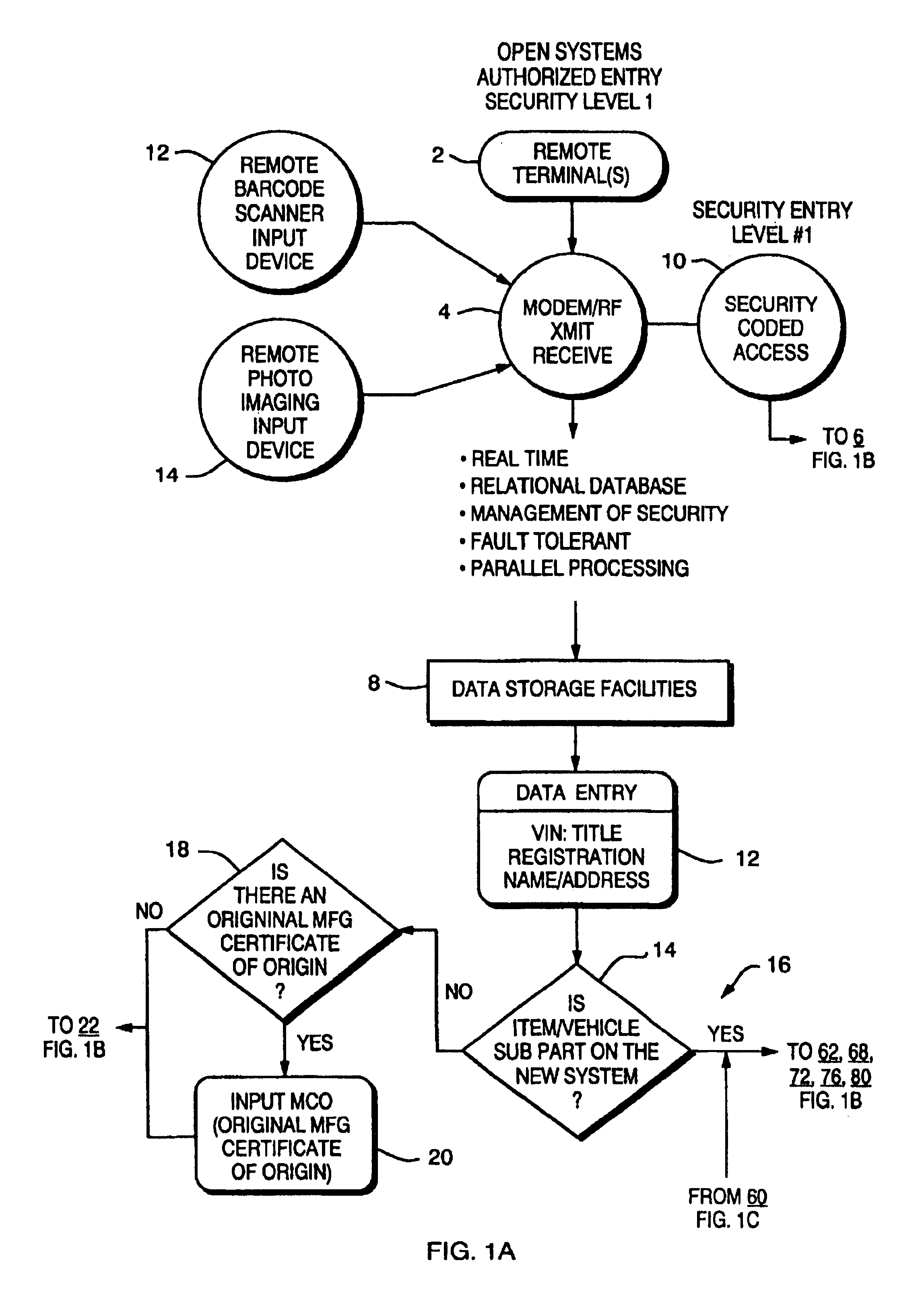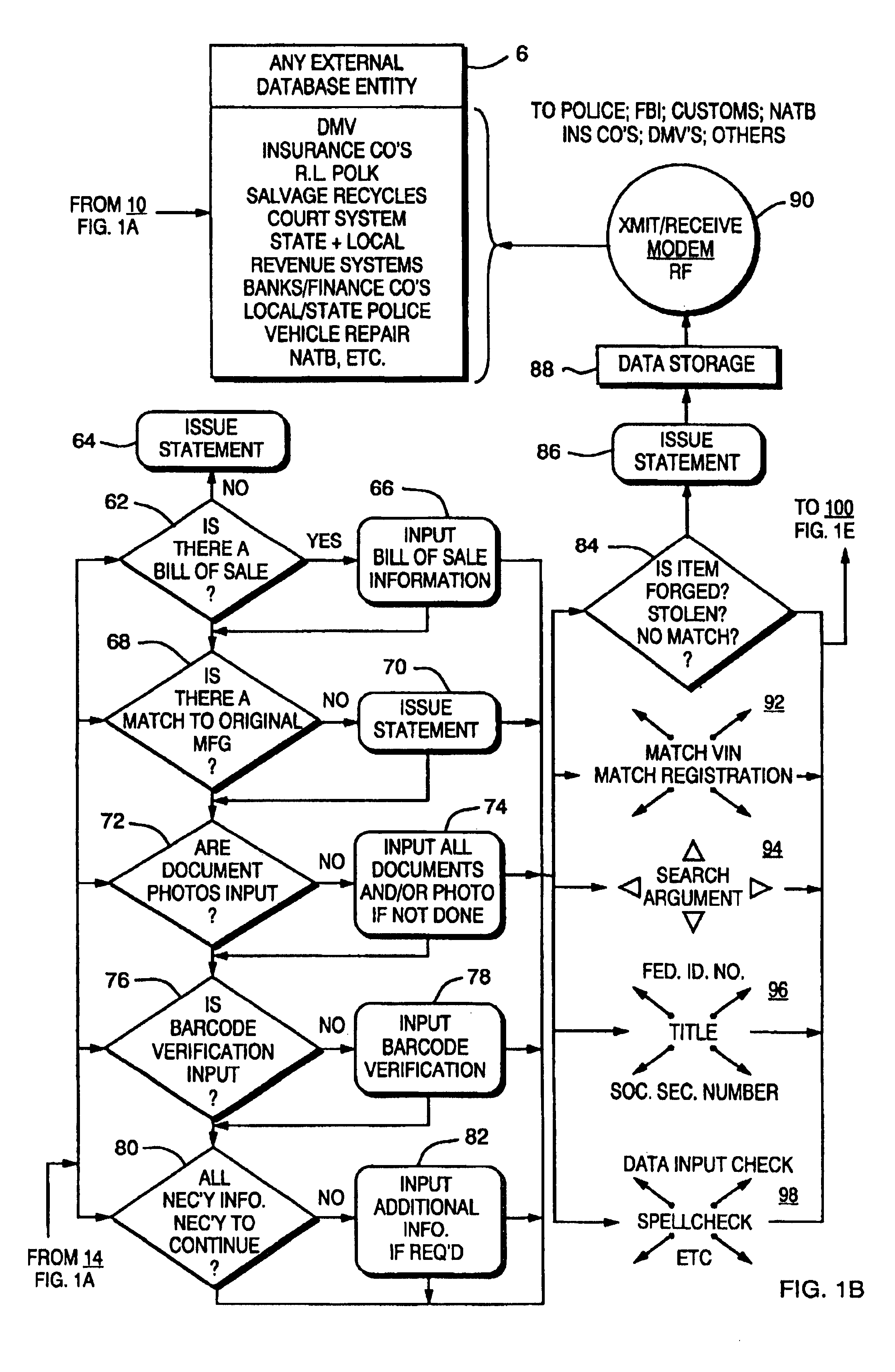Uniform system for verifying and tracking the title of articles or objects of value
a title insurance and article technology, applied in the field of uniform system for verifying and tracking the title of articles or objects of value, can solve the problems of not having a current universal system or universal centralization means for all records, unable to find an insurance company willing to issue title insurance policies, and purchasers usually bear all the risk of loss
- Summary
- Abstract
- Description
- Claims
- Application Information
AI Technical Summary
Benefits of technology
Problems solved by technology
Method used
Image
Examples
Embodiment Construction
[0062]FIGS. 1A-1H refer to the preferred embodiment of the invention which is directed to an improved system for tracking motor vehicles. It will be understood, however that this system may be modified for use with any articles or objects of value having serial numbers assigned by the manufacturer. The system may also be modified for use with articles or objects of value not having a manufacturer assigned serial number.
[0063]In the case of a motor vehicle, the VIN is coded by the manufacturer to reveal various features of the vehicle. For example, the first character represents country of origin, the second character represents vehicle type, the third represents the number of passengers, etc. A typical VIN for a 1990 Dodge Shadow in FIG. 2.
[0064]The number “1” indicates country of origin, the letter B indicates vehicle type, the number “3” indicates the number of passengers, the letter “X” indicates the type of restraint system, etc. The data base of the present invention contains s...
PUM
 Login to View More
Login to View More Abstract
Description
Claims
Application Information
 Login to View More
Login to View More - R&D
- Intellectual Property
- Life Sciences
- Materials
- Tech Scout
- Unparalleled Data Quality
- Higher Quality Content
- 60% Fewer Hallucinations
Browse by: Latest US Patents, China's latest patents, Technical Efficacy Thesaurus, Application Domain, Technology Topic, Popular Technical Reports.
© 2025 PatSnap. All rights reserved.Legal|Privacy policy|Modern Slavery Act Transparency Statement|Sitemap|About US| Contact US: help@patsnap.com



